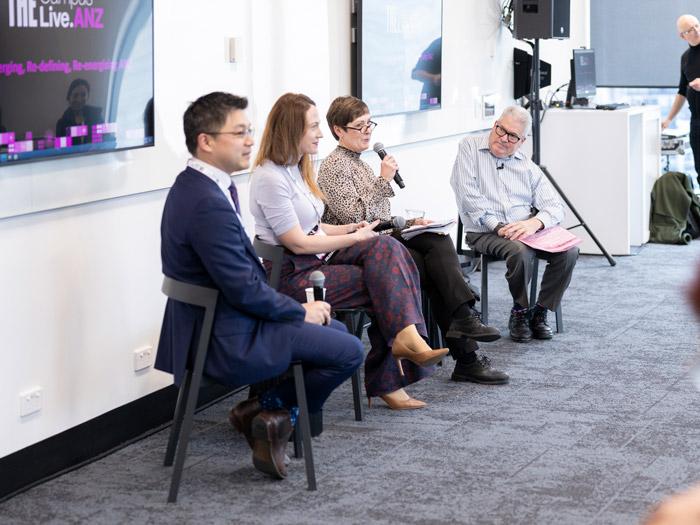
How to collaborate successfully with big business

The university sector, with its tight budgets, limited resources and slow-moving sign-off processes, works within very different parameters to the corporate business world.
So, when YouTube approached King’s Health Partners, King’s College London and South London and Maudsley NHS Foundation Trust to collaborate on a series of videos to help tackle misinformation around mental health and balance out the amount of “influencer-led” content with reliable information from the experts, there were a number of factors we needed to consider and put in place to ensure successful collaboration.
Set clear expectations, asks and deliverables from the start
Recognising the difference in operating models, it is important to be up front and honest from the start on what can be reasonably delivered and what will be needed to achieve that. In our partnership, it was clear that none of our organisations had the capacity or capabilities within our current teams to film, edit and produce the videos needed. So, we needed to use most of the funding available to recruit an in-house digital producer to work across the three organisations and provide a consistent look, feel and quality to the videos. By having someone dedicated to managing the production, we were able to adapt and innovate as the video series progressed, allowing the series style, format and design to evolve to meet trends and respond to metrics and evaluation insights. Being clear with our partners at YouTube where our capabilities were at the start meant we had some breathing space to develop and evolve the series as we matured in our approach.
- Spotlight guide: THE Awards 2024: learn from the best in UK and Irish higher education
- Leveraging international collaborations to tackle global health challenges
- How to make enterprise activities enjoyable and impactful
Be aware of sign-off processes
Timescales and sign-off processes can differ greatly between organisations so it is important to map those out early on. Establish which internal teams or individuals will need to be involved and what the specific criteria will be to ensure that all those involved in the partnership are happy with the final result. In our case, this meant identifying mechanisms for approaching academics and clinicians to take part in the films, fact-checking and editorial sign-off processes, and what the expectations were from YouTube in terms of the final cut, in order to ensure we were hitting the targets set. It was important for us to work closely with academics and clinicians to jointly storyboard and create outlines for the videos, then develop a script that balanced what they wanted to say with the questions that were being asked online and needed an answer. By making it a joint process, we reduced the back and forth when it came to approving the final cuts.
Does it resonate with your key audience?
When working in partnership, it is even more important to do proper audience mapping and work out who your primary and secondary audiences are, as this may differ depending on the organisation and its motivations. For our partnership, it was also important to ensure that we were responding to what young people wanted to know and were searching for, rather than what we wanted to broadcast. To ensure our videos resonated, our partnership ran focus groups with the Mind and Body Expert Advisory Group, composed of patients with experience of mental health conditions, and we worked closely with our partners at YouTube to design the videos for young people, using YouTube shorts, subtitles and portrait mode. We planned a flexible social media campaign with some paid post boosting, aligned with relevant awareness weeks. We strategically used paid boosting on social media, targeting people with an interest in mental health topics, to move them from “passive exposure” to “active recall” in response to our content. It is important to keep monitoring the success of a partnership and campaign as it moves through different stages – here we set KPIs to monitor viewing figures, demographics, and gender of those watching, as well as new subscribers.
It’s good to talk
Finally, open communication between partners is vital in any collaboration, with regular catch-ups to monitor progress, keep the partnership on track and raise any concerns. We had regular meetings throughout this collaboration, between the three organisations, YouTube and with those involved in the production, editing and distribution of the videos. This meant there were regular touch points along the journey and that we could quickly get agreement to flex and adapt where we needed to. YouTube has used the success of our partnership to approach others to use video as an effective way to reach patients, including Mind, Great Ormond Street Hospital, University College London Hospitals NHS Foundation Trust, and NHS 24. It is great to see this model having an ongoing impact.
Tanya Wood is deputy director of external communications at King’s College London.
King's College London was shortlisted for International Collaboration of the Year at the Times Higher Education Awards 2024 #THEAwards. A full list of shortlisted candidates can be found here.
If you would like advice and insight from academics and university staff delivered direct to your inbox each week, sign up for the Campus newsletter.
Additional Links
For more resources on this topic, visit our spotlight guide to how to work well with industry.


